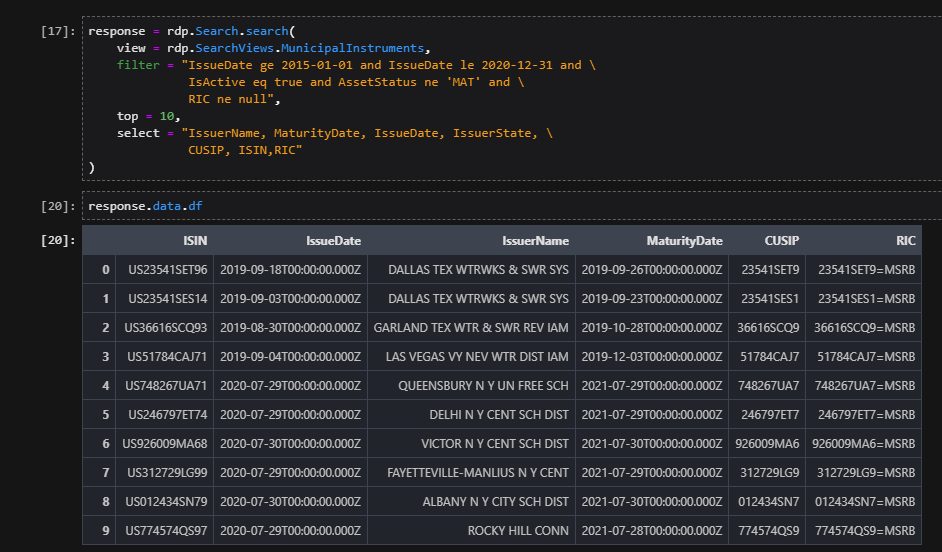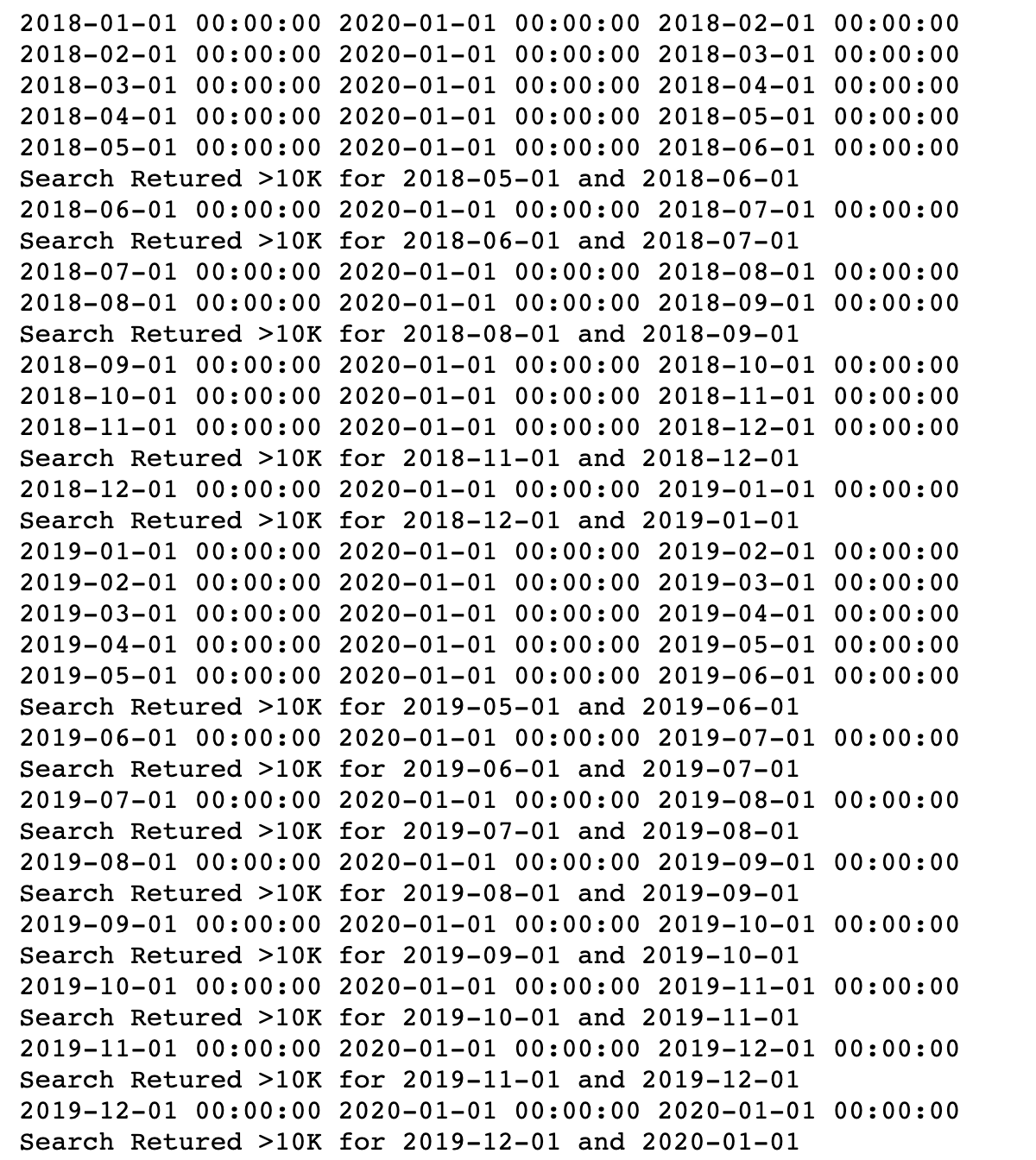Hello,
I am using the following code to get all the data on municipal bonds. However, the number of bonds in the period that I am interested in is around 800,000. How can I download the data for sub periods with at most 10000 observations? IssueDate should be between 01/01/2015 and 12/31/2020.
df = rdp.Search.search(
view = rdp.SearchViews.MunicipalInstruments,
filter = "IssueDate ???????,
top = 10000,
select = "IssuerName, MaturityDate,\
IssueDate, IssuerState, CUSIP, ISIN,RIC"
)





